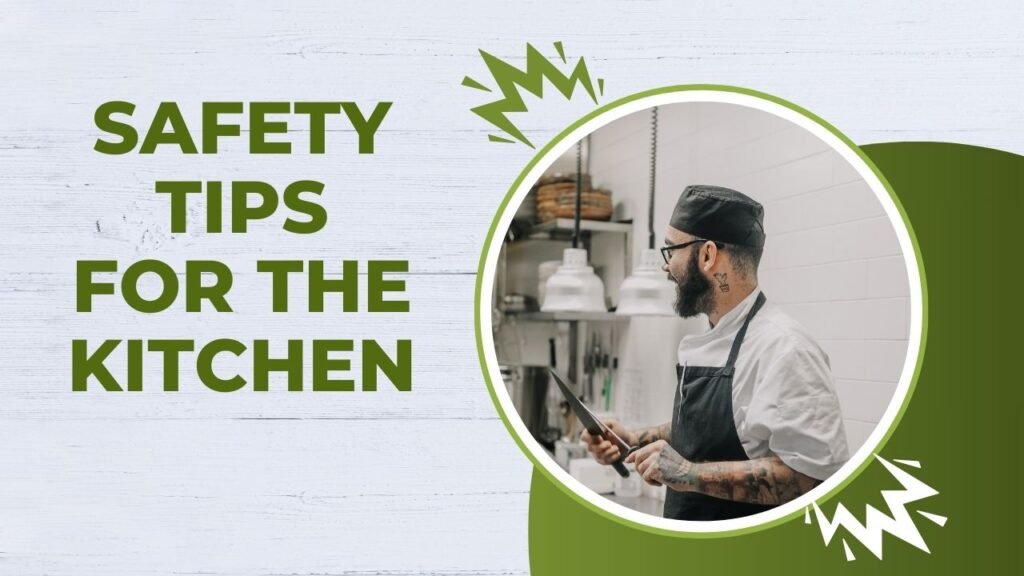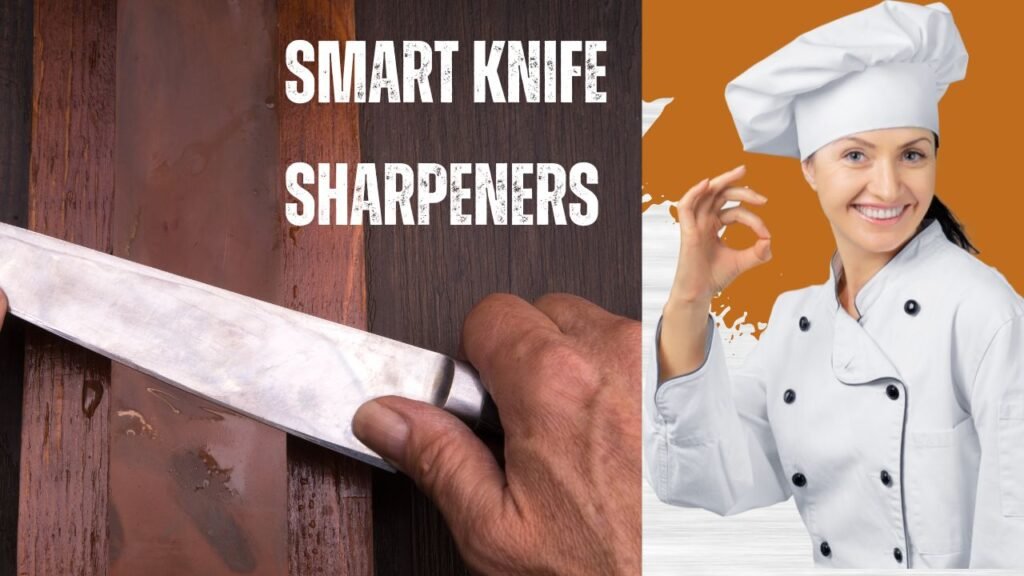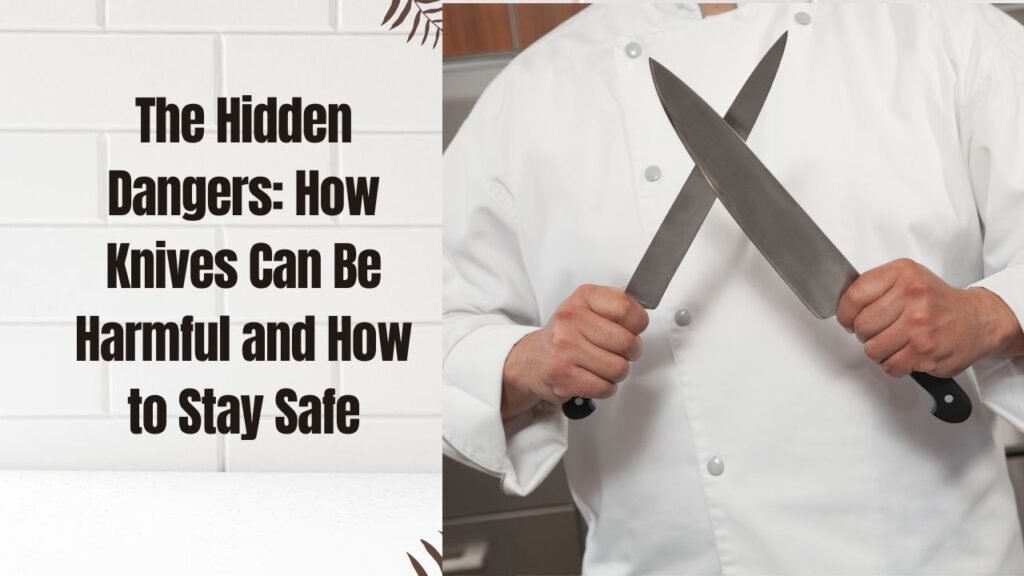Imagine reaching for your favorite kitchen knife to chop vegetables, only to accidentally slip and cut yourself. Knives are indispensable tools in our daily lives, but how knives can be harmful is a topic that often goes unnoticed until an accident occurs. Whether in the kitchen, workplace, or during self-defense situations, understanding the potential risks associated with knives is crucial for ensuring safety. Let’s explore the various ways knives can be harmful and discover effective strategies to mitigate these risks.
Understanding the Risks: How Knives Can Be Harmful
Knives, by their very nature, are designed to cut, slice, and chop. While their utility is undeniable, their potential to cause harm cannot be ignored. Here are some common scenarios where knives can be dangerous:
1. Accidental Injuries in the Kitchen
The kitchen is the most common place where knife-related accidents occur. Whether you’re a seasoned chef or a novice cook, slips and mishandling can lead to serious cuts and lacerations.
- Improper Handling: Holding the knife incorrectly can cause it to slip.
- Distracted Cutting: Multitasking while using a knife increases the risk of accidents.
- Dull Blades: Surprisingly, dull knives can be more dangerous than sharp ones because they require more force and are more likely to slip.
2. Workplace Hazards
In various professions, knives are essential tools. However, improper use or inadequate safety measures can lead to workplace injuries.
- Construction and Manufacturing: Utility knives used for cutting materials can cause hand injuries if not handled properly.
- Food Service Industry: Chefs and kitchen staff are at risk of repetitive strain injuries and cuts.
- Healthcare Settings: Medical professionals using scalpels and other sharp instruments must exercise extreme caution to prevent accidental cuts.
3. Self-Defense and Violent Incidents
Knives can also be weapons, leading to severe injuries or fatalities in violent confrontations.
- Personal Defense: While some carry knives for self-defense, improper use can escalate a situation or result in unintended harm.
- Assaults and Crimes: Knives are commonly used in violent crimes, posing significant risks to both victims and perpetrators.
4. Improper Storage and Accessibility
Storing knives improperly can lead to accidents, especially in households with children.
- Accessible Storage: Leaving knives within reach of children increases the risk of accidental injuries.
- Unsecured Storage: Knives stored loosely in drawers can slip out and cause cuts when accessed.
Statistics Speak: The Impact of Knife-Related Injuries
Understanding the prevalence of knife-related injuries underscores the importance of safety measures. Here are some eye-opening statistics:
| Statistic | Details |
|---|---|
| Annual Kitchen Injuries | Over 1.3 million people in the U.S. are treated for kitchen knife injuries each year. |
| Workplace Knife Injuries | Approximately 30,000 non-fatal knife-related injuries occur in workplaces annually. |
| Violent Crimes Involving Knives | Knives are the weapon of choice in about 75% of violent crimes in certain regions. |
| Child-Related Accidents | Around 200,000 children under 18 visit emergency rooms each year due to knife-related injuries. |
These numbers highlight the critical need for awareness and proactive safety measures to prevent knife-related harm.

Preventing Knife-Related Accidents: Safety Tips and Best Practices
While knives are inherently dangerous, many accidents can be prevented through proper handling, storage, and maintenance. Here are some essential tips to ensure safety:
1. Proper Handling Techniques
- Grip Correctly: Hold the knife firmly with a secure grip. For chopping, use a pinch grip where your thumb and index finger grip the blade just above the handle.
- Cut Away from Your Body: Always direct the knife away from yourself and others to minimize injury risk.
- Use the Right Knife for the Task: Different knives are designed for specific purposes. Using the appropriate knife reduces the likelihood of accidents.
2. Maintain Sharp Blades
- Regular Sharpening: Keep your knives sharp to ensure clean cuts and reduce the need for excessive force.
- Proper Honing: Use a honing rod regularly to maintain the edge between sharpenings.
3. Safe Storage Practices
- Knife Blocks and Magnetic Strips: Store knives in blocks or on magnetic strips to keep them safely out of reach of children.
- Protective Sheaths: Use sheaths or blade guards for knives that are not in use.
- Secure Cabinets: Keep knives in locked cabinets if there are children in the household.
4. Workplace Safety Protocols
- Training Programs: Implement comprehensive training for employees on proper knife handling and safety measures.
- Personal Protective Equipment (PPE): Provide gloves and other protective gear to reduce the risk of injuries.
- Regular Inspections: Conduct routine checks to ensure knives and safety equipment are in good condition.
5. Self-Defense Awareness
- Training: If you carry a knife for self-defense, undergo professional training to use it responsibly and effectively.
- Legal Knowledge: Understand the laws and regulations regarding knife carrying and usage in your region to avoid legal repercussions.
The Role of Education and Awareness
Educating individuals about the potential dangers of knives and promoting awareness can significantly reduce the number of accidents and injuries. Here’s how:
1. Community Programs
- Safety Workshops: Organize workshops in schools, workplaces, and community centers to teach proper knife handling and safety.
- Public Awareness Campaigns: Utilize media and public platforms to spread information about knife safety.
2. Parental Guidance
- Teach Children Early: Educate children about the dangers of knives and supervise their activities in the kitchen.
- Age-Appropriate Lessons: Provide age-appropriate safety lessons to ensure children understand and respect knife safety.
3. Workplace Training
- Comprehensive Training: Ensure all employees receive thorough training on knife safety relevant to their specific roles.
- Regular Refreshers: Conduct regular refresher courses to keep safety practices top of mind.
Legal Considerations: Knives and the Law
Understanding the legal implications of knife ownership and usage is crucial to prevent legal issues and ensure responsible behavior.
1. Knife Carrying Laws
Different regions have varying laws regarding the carrying of knives in public. It’s essential to familiarize yourself with local regulations to avoid legal trouble.
- Blade Length Restrictions: Some areas limit the length of blades that can be carried.
- Permits and Licensing: Certain knives may require permits or licenses to carry legally.
- Prohibited Knives: Automatic knives, switchblades, and other specific types may be banned or restricted.
2. Self-Defense Laws
Using a knife for self-defense can have legal consequences. Understanding when and how you can legally use a knife in self-defense is vital.
- Justifiable Use: Know the circumstances under which self-defense is justified and the extent of force allowed.
- Legal Liability: Improper use of a knife in self-defense can lead to criminal charges or civil lawsuits.
3. Workplace Regulations
Employers must comply with workplace safety regulations to protect employees and minimize the risk of knife-related injuries.
- Occupational Safety Standards: Adhere to OSHA or other relevant safety standards regarding knife use in the workplace.
- Reporting and Documentation: Maintain records of knife-related injuries and incidents to comply with legal requirements.
Enhancing Knife Safety: Innovative Solutions and Technologies
Advancements in technology and design are contributing to safer knife usage, minimizing the risk of accidents.
1. Safety-Enhanced Knife Designs
Modern knives incorporate safety features such as:
- Finger Guards: Protect fingers from slipping onto the blade.
- Non-Slip Handles: Provide a secure grip, reducing the chance of accidents.
- Retractable Blades: Useful for multi-purpose tools, ensuring the blade is safely enclosed when not in use.

2. Smart Knife Sharpeners
Innovative knife sharpeners with built-in safety mechanisms ensure consistent sharpening angles and prevent over-sharpening, maintaining blade integrity without compromising safety.
3. Automated Storage Solutions
Smart storage solutions, such as electronically controlled knife drawers, ensure knives are securely stored and only accessible to authorized users, reducing the risk of accidental access by children.
FAQs: Addressing Common Concerns About Knife Safety
1. How Can I Teach My Children About Knife Safety?
Start by explaining the dangers of knives in simple terms. Supervise their activities in the kitchen, involve them in safe tasks like washing vegetables, and emphasize the importance of not touching knives without adult supervision.
2. What Should I Do If I Accidentally Cut Myself with a Knife?
Immediately apply pressure to the wound with a clean cloth to stop bleeding. Clean the area with water, apply an antiseptic, and cover it with a sterile bandage. Seek medical attention if the cut is deep or bleeding doesn’t stop.
3. Are There Safer Alternatives to Traditional Knives for Children?
Yes, child-safe knives with rounded edges and plastic blades are available. These knives allow children to participate in kitchen activities under supervision without the risk of serious cuts.
4. How Often Should I Sharpen My Kitchen Knives?
Regular sharpening depends on usage. For frequent use, sharpen your knives every few months. Use a honing rod between sharpenings to maintain the edge and reduce the frequency of sharpening.
5. Can I Use the Same Knife for All Kitchen Tasks?
While it’s possible, using specific knives for different tasks enhances safety and efficiency. For example, use a chef’s knife for chopping, a paring knife for peeling, and a serrated knife for bread.
Personal Reflections: Balancing Utility and Safety
Knives are essential tools that bring immense utility to our daily lives, from preparing meals to performing tasks at work. However, their potential to cause harm requires us to approach knife usage with respect and caution. Personally, I find that investing time in learning proper knife handling techniques and maintaining my knives not only enhances safety but also improves efficiency and enjoyment in the kitchen. It’s all about finding the right balance between utility and safety to make the most out of these indispensable tools without compromising well-being.
The Future of Knife Safety: Innovations on the Horizon
As awareness of knife-related risks grows, so does the innovation aimed at enhancing safety. Future advancements may include:
- Smart Knives with Integrated Safety Features: Knives that can detect improper handling and alert users to potential hazards.
- Advanced Materials: Development of materials that make knives both durable and safer to handle.
- Enhanced Training Programs: Virtual reality (VR) and augmented reality (AR) training modules that provide immersive knife safety education.
Conclusion
Knives are powerful tools that, when used responsibly, offer immense benefits in the kitchen, workplace, and beyond. However, understanding how knives can be harmful is essential for preventing accidents and ensuring safety. By adopting proper handling techniques, maintaining sharp blades, practicing safe storage, and staying informed about legal considerations, you can minimize the risks associated with knife usage. Remember, safety starts with awareness and proactive measures. So, the next time you reach for a knife, take a moment to appreciate its potential and handle it with the care it deserves.
Stay Sharp, Stay Safe!
Knives will continue to be a staple in our lives, serving various purposes with their sharp edges and versatile designs. Embrace the responsibility that comes with using such tools, and prioritize safety to enjoy their benefits without the accompanying risks. After all, a well-maintained knife not only makes tasks easier but also ensures that those around you remain safe.


